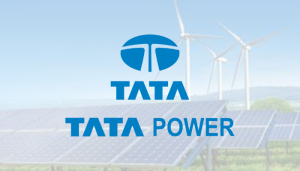Tata Power Company Ltd: Pioneering a Green Energy Revolution
Introduction
Tata Power Company Ltd, India’s largest vertically integrated power company, is at the forefront of transforming the energy landscape. Committed to sustainability, the company is engaged in the generation, transmission, and distribution of electricity, with a focus on renewable sources. In this article, we delve into the key aspects of Tata Power’s operations, its global footprint, and its ambitious targets for the future.
Power Portfolio: A Diverse Mix
Tata Power’s power portfolio is an impressive testament to its commitment to diversity and sustainability. As of H1FY24, the company boasts a substantial energy capacity of 14,381 MW. This includes 8,860 MW from thermal sources, 1,007 MW from wind, 880 MW from hydro, 443 MW from waste heat recovery/BFG, and a significant 3,191 MW from solar. Notably, an additional 3,760 MW of renewable capacity is under construction.
The distribution of the installed capacity further reflects the company’s commitment to green energy. Solar leads the way with 22%, followed by thermal at 62%, wind at 7%, waste heat/BFG at 3%, and hydro at 6%.
Capacity Utilization and Operational Presence
In the dynamic energy sector, Tata Power maintains robust capacity utilization rates. In H1FY24, thermal capacity utilization stands at an impressive 77.2%, with specific projects such as Mundra and MO Hydro contributing significantly. Wind and solar utilization rates, at 28% and 23% respectively, underscore the company’s comprehensive approach to energy generation.
Tata Power’s presence across the value chain is noteworthy. From the generation of power through thermal and renewable sources to transmission and distribution, the company also offers ancillary services like EPC (Engineering, Procurement, and Construction) and O&M (Operations and Maintenance).
Renewable Energy Segment: A Driving Force
The Renewables Segment is a pivotal component of Tata Power’s operations, contributing to the company’s green energy initiatives. It involves the generation of power from renewable sources such as wind and solar. With a focus on sustainability, Tata Power has become a key player in the renewable energy sector, reflecting a broader industry trend towards cleaner energy alternatives.
Transmission & Distribution: Expanding Reach and Services
Tata Power’s Transmission & Distribution segment plays a crucial role in the energy value chain. The company’s retail customer base has expanded significantly, reaching approximately 12 million after acquiring a stake in Odisha’s distribution business. With 4,383 Ckm operational capacity and 906 Ckm in the pipeline, Tata Power is poised for continued growth in this segment. Noteworthy projects like Jalpura Khurja Power Transmission Limited and Rajasthan Phase IV Part C further showcase the company’s commitment to infrastructure development.
Tata Power EV Charge: Best EV charging stocks
As electric vehicles (EVs) gain traction globally, Tata Power is at the forefront of the EV charging infrastructure revolution. The Tata Power EZ Charge initiative stands out as the only charging point operator in India operating in bus charging, fleet, home, and public charging. With a market leadership share of approximately 55% in public charging and 85% in home charger installations, Tata Power is making substantial strides in promoting sustainable transportation.

Global Presence: Building a Sustainable Future Worldwide
Tata Power’s influence extends beyond national borders, with a strong global presence. The company has a significant stake in hydro projects in Georgia and Zambia, with installed capacities of 187 MW and 120 MW, respectively. In Bhutan, Tata Power holds a 26% stake in the Dagachhu hydro project with 126 MW capacity. Additionally, the company has coal mines in Indonesia through associate entities, highlighting its commitment to diverse energy sources.
Brownfield Projects: Meeting Future Energy Needs
Tata Power is investing in brownfield projects to meet the growing energy demand. The Bhivpuri PSP brownfield project, with a capacity of 1000 MW, is set to begin in mid-2024, aiming for completion by the end of 2027. Another notable project, the 1,800 MW Shirawta PSP brownfield project, is scheduled to start in mid-2024, with completion targeted for the end of 2028. These projects signify Tata Power’s strategic vision for sustainable energy solutions.
Ambitious Targets for a Sustainable Tomorrow
Looking ahead, Tata Power has set ambitious targets for itself. The company aspires to achieve 500 GW by 2030, implying an impressive annual capacity addition of 45 GW. With 179 GW installed by October 2023 and 97 GW of projects in progress, Tata Power aims to fulfill the remaining capacity through auctions until FY28. The company’s commitment to green energy is evident, with a target of over 20 GW by 2030, accounting for 70% of the total capacity. Tata Power EZ Charge also has its sights set high, targeting over 10,000 public chargers and over 200,000 home chargers by FY28.
Conclusion: Lighting the Path to a Sustainable Future
Tata Power Company Ltd’s journey reflects a commitment to sustainability and innovation in the energy sector. From a diverse power portfolio to global initiatives and ambitious targets, Tata Power is playing a pivotal role in shaping a sustainable and green energy future. As the world grapples with the challenges of climate change, Tata Power stands as a beacon of hope, lighting the path towards a brighter and more sustainable tomorrow.
| Metric | Value |
|---|---|
| Market Cap | ₹ 1,04,376 Cr. |
| Current Price | ₹ 327 |
| High / Low | ₹ 347 / 182 |
| Stock P/E | 30.6 |
| Book Value | ₹ 94.3 |
| Dividend Yield | 0.62 % |
| ROCE | 11.7 % |
| ROE | 12.6 % |
| Face Value | ₹ 1.00 |
| Industry PE | 19.6 |
| PEG Ratio | 0.67 |
| Pledged Percentage | 1.40 % |
| Free Cash Flow | ₹ -447 Cr. |
| Promoter Holding | 46.9 % |
| Debt to Equity | 1.74 |
| Market Cap to Sales | 1.78 |
| Debt Capacity | -0.04 |
| Mkt Cap To Debt Cap | 1.20 |
| Reserves | ₹ 29,817 Cr. |
Quarterly Results
| Period | Sales (+) | Expenses (+) | Operating Profit | OPM % | Profit before tax | Net Profit (+) | EPS in Rs |
|---|---|---|---|---|---|---|---|
| Sep 2020 | 8,290 | 6,323 | 1,967 | 24% | 689 | 371 | 0.88 |
| Dec 2020 | 7,598 | 5,864 | 1,734 | 23% | 421 | 318 | 0.78 |
| Mar 2021 | 10,363 | 8,937 | 1,425 | 14% | 373 | 481 | 1.23 |
| Jun 2021 | 10,132 | 7,984 | 2,149 | 21% | 1,038 | 466 | 1.22 |
| Sep 2021 | 9,810 | 8,481 | 1,329 | 14% | 638 | 506 | 1.32 |
| Dec 2021 | 10,913 | 9,279 | 1,634 | 15% | 788 | 552 | 1.33 |
| Mar 2022 | 11,960 | 10,091 | 1,869 | 16% | 71 | 632 | 1.57 |
| Jun 2022 | 14,495 | 12,812 | 1,683 | 12% | 1,062 | 884 | 2.49 |
| Sep 2022 | 14,031 | 12,270 | 1,760 | 13% | 1,373 | 935 | 2.56 |
| Dec 2022 | 14,129 | 11,810 | 2,319 | 16% | 1,864 | 1,052 | 2.96 |
| Mar 2023 | 12,454 | 10,526 | 1,928 | 15% | 1,158 | 939 | 2.43 |
| Jun 2023 | 15,213 | 12,500 | 2,713 | 18% | 1,476 | 1,141 | 3.04 |
| Sep 2023 | 15,738 | 12,967 | 2,771 | 18% | 1,231 | 1,017 | 2.74 |
Profit & Loss:
| Year | Sales (+) | Expenses (+) | Operating Profit | OPM % | Profit before tax | Net Profit (+) | EPS in Rs | Dividend Payout % |
|---|---|---|---|---|---|---|---|---|
| Mar 2012 | 26,069 | 21,185 | 4,884 | 19% | 507 | -898 | -4.02 | -27% |
| Mar 2013 | 33,177 | 27,583 | 5,595 | 17% | 1,277 | 123 | -0.32 | -319% |
| Mar 2014 | 35,726 | 28,810 | 6,916 | 19% | 975 | 12 | -0.96 | -114% |
| Mar 2015 | 33,593 | 27,292 | 6,301 | 19% | 1,484 | 457 | 0.62 | 210% |
| Mar 2016 | 29,494 | 27,389 | 2,105 | 7% | 1,281 | 786 | 2.45 | 53% |
| Mar 2017 | 27,588 | 22,114 | 5,473 | 20% | 1,450 | 1,100 | 3.31 | 39% |
| Mar 2018 | 26,840 | 24,545 | 2,295 | 9% | 2,773 | 2,611 | 8.90 | 15% |
| Mar 2019 | 29,881 | 26,811 | 3,070 | 10% | 3,693 | 2,606 | 8.71 | 15% |
| Mar 2020 | 29,136 | 23,847 | 5,289 | 18% | 1,958 | 1,316 | 3.76 | 41% |
| Mar 2021 | 32,703 | 25,747 | 6,956 | 21% | 1,941 | 1,439 | 3.53 | 44% |
| Mar 2022 | 42,816 | 35,785 | 7,031 | 16% | 2,535 | 2,156 | 5.45 | 32% |
| Mar 2023 | 55,109 | 47,381 | 7,728 | 14% | 5,457 | 3,810 | 10.44 | 19% |
| TTM | 57,534 | 47,803 | 9,731 | 17% | 5,728 | 4,149 | 11.17 | – |
Balance Sheet
During the period from March 2012 to September 2023, the financial outlook of the entity showed significant growth. In 2012, the reserves were $12,437 million and borrowings were $33,860 million. Both showed fluctuations until 2018. However, in March 2022, the reserves surged to $28,468 million. Although the borrowings showed variations, they reached $52,923 million by September 2023. The total liabilities and assets also followed an upward trajectory, increasing from $61,604 million in 2012 to $132,106 million in September 2023. This financial evolution indicates the entity’s expansion and strategic financial management over the analyzed period.
Shareholding Pattern
Between June 2022 and September 2023, there were interesting changes in the ownership of the entity. The promoters held the largest stake throughout the period, with 46.86% ownership. Foreign Institutional Investors (FIIs) saw a small decrease in ownership, starting at 10.10% in June 2022 and ending at 10.00% in September 2023. Domestic Institutional Investors (DIIs) had a similar trend, starting at 14.70% and increasing to 15.68%. Government ownership remained constant at 0.32%. The public had varying levels of ownership, starting at 28.02% in June 2022 and decreasing to 27.15% by September 2023. During the same period, the number of shareholders ranged from 38,82,482 in June 2022 to 38,07,725 in September 2023. This information provides a comprehensive understanding of the evolving positions of stakeholders within the organization’s structure during the specified timeframe.




Pingback: "Experts Predict Suzlon Energy Stock To Reach Rs 200, Learn More Here" | Guru Finance24
Pingback: Tata Power: जानिए शेयरों में क्यों आएगी जबरदस्त तेजी! | Guru Finance24
Fast, Reliable Amirdrassil Raid Carries: Boost Your Play Today
amirdrassil boost buy http://www.amirdrassil-boost.com/ .
Рекомендации перед началом перетяжки салона автомобиля в столице.
Ателье по перетяжке салона автомобиля https://poshiv-avtosalona.ru/ .